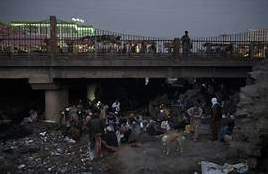Methamphetamine manufacturing is a growing threat to national and regional health and security, the United Nations drug agency said in a report.
Afghanistan has emerged as the world’s fastest-growing producer of methamphetamine, according to a new report from the United Nations Office on Drugs and Crime (UNODC). This development comes despite the Taliban’s efforts to curb the narcotics trade since regaining power in August 2021. The report highlights Afghanistan’s role not only as a major source of opium and heroin but now as a significant meth producer, which poses growing risks to both national and regional health and security.
The meth produced in Afghanistan is mainly derived from ephedra plants, which are widely available in the wild and legally permitted in the country. Unlike heroin or cocaine, methamphetamine production does not require agricultural land or lengthy growth periods, making it a more accessible and less resource-intensive drug to manufacture. The meth labs in Afghanistan are mobile and often hidden, which complicates efforts to track and dismantle them.
Seizures of meth suspected to have originated in Afghanistan have been reported in regions such as the European Union and East Africa. The quantity of meth seized annually in Afghanistan has dramatically increased from less than 220 pounds in 2019 to nearly 6,000 pounds in 2021, signaling a sharp rise in production. However, the UNODC report could not provide concrete figures regarding the total amount of meth produced, its value, or its domestic consumption due to lack of comprehensive data.
Angela Me, the chief of the UNODC’s Research and Trend Analysis Branch, noted that meth production in Afghanistan has clear advantages over other narcotics. “You don’t need to wait for something to grow,” she explained. “You don’t need land. You just need the cooks and the know-how.” Furthermore, the ephedra plant, a key ingredient for meth, is not found in other major meth-producing countries like Myanmar or Mexico, adding to Afghanistan’s unique position in the meth trade.
While the Taliban has publicly declared a war on narcotics, including meth, it is too early to assess the real impact of their drug crackdown. According to Abdul Mateen Qani, a spokesperson for the Taliban’s Interior Ministry, the government has banned the cultivation, production, sale, and use of narcotics. Authorities have reportedly destroyed 644 drug production facilities and eradicated 12,000 acres of land used for growing illicit narcotic crops. Over 5,000 raids have been conducted, resulting in the arrest of around 6,000 individuals involved in the narcotics trade. However, the ongoing issue of methamphetamine production remains a significant challenge.

